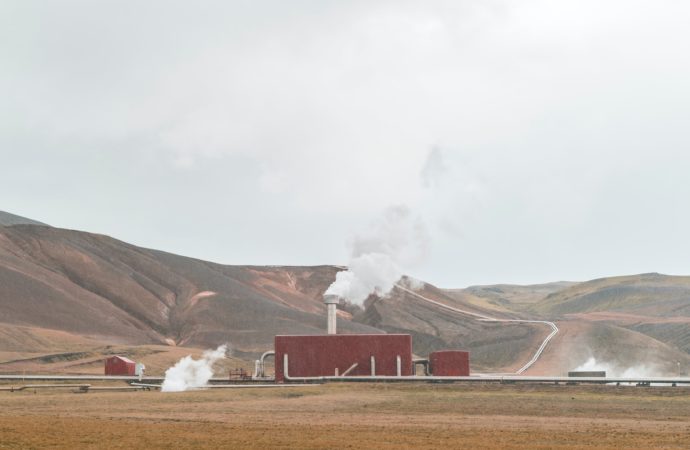Enhanced geothermal electricity is now a reality in the United States.
Late last month marked a new breakthrough in next-generation clean energy technology. Fervo Energy, a Houston-based geothermal project developer, announced that its first commercial “enhanced” geothermal plant went online and began producing usable electricity in Nevada.
According to a Canary Media report:
A next-generation geothermal plant backed by Google has started sending carbon-free electricity to the grid in Nevada, where the tech company operates some of its massive data centers.
On Tuesday, Google and geothermal developer Fervo Energy said that electrons began flowing from the first-of-a-kind facility earlier this month. The 3.5-megawatt project, called Project Red, is now supplying power directly to the Las Vegas–based utility NV Energy.
The announcement comes more than two years after Google and Fervo signed a corporate agreement to develop the “enhanced geothermal” plant.
The project’s success marks an important energy milestone for a promising and innovative technology that could one day be a boon for Colorado’s electric grid.
Geothermal energy production has existed for a long time, but its deployment in the United States has been quite limited. That’s because its use has traditionally been restricted geographically to regions with naturally-occurring hydrothermal activity like near hot springs, for instance. As a result, geothermal currently only represents a fraction of a single percent of the country’s annual electricity production. Colorado does not produce any geothermal electricity.
However, exciting innovations in the world of Enhanced Geothermal Systems seek to essentially bring the drilling technologies long associated with fracking for oil and gas to the world of procuring heat and steam from deep beneath the Earth’s surface. This would open up the potential for producing geothermal electricity where it was not previously feasible.
Enhanced geothermal production works by first pumping fluid down a vertical injection well, then by horizontally drilling to an adjacent vertical production well to create fractures in the hot, dry rock below the earth’s surface in the process. The fluid is heated to extremely high temperatures as it passes through the small subsurface rock fractures before it is returned to the surface as steam through the production well to spin a turbine for electricity generation.
The benefit is that this power would be both carbon-free and dispatchable, meaning it would be available whenever needed, for as long as it is needed. That makes it a far more valuable clean energy resource to the grid than intermittent renewables like wind and solar.
Colorado just so happens to be geologically blessed with some of the best geothermal resources in the country. It also possesses a talented local labor force consisting of geologists, engineers, and drilling operators with decades of knowledge and expertise gained during the shale boom that can be put to good use in the state. That makes geothermal an energy technology better suited than other renewables to fulfilling the “just transition” pledges of policymakers trying to regulate the state’s oil and gas industry out of business.
Remaining Challenges
Importantly, however, key hurdles remain in the way of geothermal becoming one of Colorado’s future energy sources. The 3.5 MW Fervo project, while no doubt a milestone, is just one small step in demonstrating the feasibility of this nascent industry. It remains to be seen how the technology performs when built to achieve higher generating capacity.
The company announced it is also in the process of developing a 400 MW project in Utah, which should provide better insight into the utility-scale value enhanced geothermal could provide once it is completed.
Notably, neither Fervo nor Google were willing to disclose any financial details surrounding the power purchase agreement struck over the project or the cost of electricity it currently produces. That will be an important consideration for all geothermal projects moving forward, particularly in the current financial climate that has seen energy projects across the board face rising costs due to interest rates and inflation.
The U.S. Department of Energy recently issued a report setting a goal of slashing the cost of enhanced geothermal “by 90%, to $45 per megawatt hour, by 2035.” That suggests the technology currently costs between $80-90/MWh on average, a good deal more expensive than most wind and solar, natural gas, and coal plants currently on Colorado’s grid. Only time and experience will tell if developers like Fervo can successfully scale up the technology and reduce costs enough to be more attractive in the future.
It also remains to be seen if enhanced geothermal can evade the activist backlash that has plagued traditional drilling operations for oil and gas. Tellingly, a preliminary proposal for a small geothermal operation in Chaffee County is already facing NIMBY backlash from local residents concerned with drilling noise and groundwater impacts.
Nevertheless, the emergence of a new form of American energy production capitalizing on decades worth of technological innovation from oil and gas pioneers is cause for celebration and cautious optimism.
With good fortune, it could help Colorado one day meet its goals of protecting the environment without sacrificing the reliability of the electric grid.








